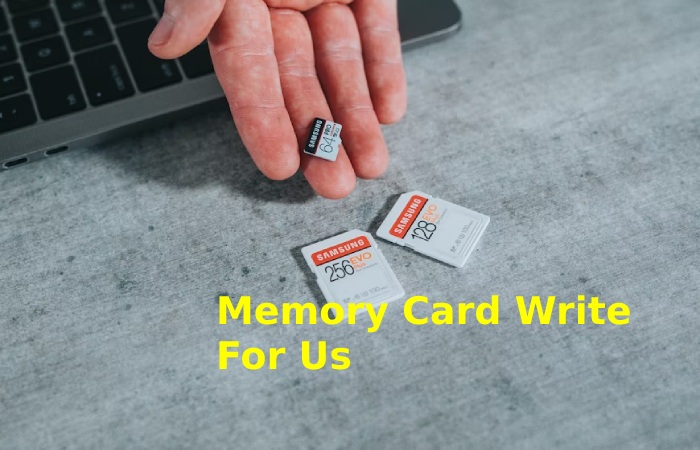Memory Card Write For Us

A memory card refers to a portable electronic storage device used to stock digital information, such as photos, music, videos, credentials, and other files. It is commonly used in devices such as digital cameras, smartphones, tablets, processors, gaming consoles, and other electrical appliances that need extra storage capacity.
Memory cards come in numerous setups and capacities, through Safe Digital (SD), microSD, CompactFlash (CF), Memory Stick, and others. They use flashy memory technology, which allows information to be stored and protected fast without the need for power.
Memory cards can be easily removed and changed between devices, making them a suitable and helpful solution for storing and moving digital data on the go.
How to Submit Your Articles?
To submit your article at technostag.com , you can send an email or pitch us at contact@technostag.com.
Why Write for Technostag – Memory Card Write For Us
Search Terms Related to Memory Card Write For Us
- Flash memory
- Portable electronic devices
- USB flash drives
- Camera
- Safe Digital (SD)
- MicroSD
- Memory
- Fujio Masuoka
- Toshiba
- PC Cards
- CompactFlash (CF)
- Modems
- CompactFlash
- SmartMedia
- Miniature Card
- Technology
- PDAs
- Compact digital cameras
Search Terms for Memory Card
- Memory Card Write For Us
- Memory Card Guest Post
- Memory Card Submit Post
- Memory Card Contribute Post
- Submit An Article Memory Card
- Memory Card Write For Us
- Memory Card Guest Post
- Memory Card Submit Post
- Memory Card Contribute Post
- Memory Card Suggest A Post
- Memory Card + Write For Us
- Memory Card + Guest Post
- Memory Card + Submit Post
- Memory Card + Contribute Post
- Memory Card Guest Author
- Write For Us + Memory Card
- Guest Post + Memory Card
- Submit Post + Memory Card
- Contribute Post + Memory Card
- Writers Wanted Safe Digital
- Write For Us Camera
- Guest Post Cards
- Submit Post Smartphone Memory
- Contribute Post CompactFlash
- Become A Guest Blogger MicroSD
Article Guidelines on Technostag – Memory Card
- We at Technostag welcomes fresh and unique content related to Memory Card.
- Technostag allow a minimum of 500+ words related to Memory Card.
- The editorial team of Technostag does not encourage promotional content related to Memory Card.
- For publishing article at Technostag email us at contact@technostag.com.
- Technostag allows articles related to Latest Technology, Gadgets, Artificial Intelligence, Gaming, Start-Up, Cyber Security and many more
Related Pages
Gadgets Write For Us
Machine Learning Write For Us
Digital Marketing Write For Us
Anti Virus Write For Us
Gaming Write For Us
Saas Write For Us
Cryptocurrency Write For Us
Smartphone Write For Us
E-commerce Write For Us
Software Write For Us
Data Analysis Write For Us
Laptop Write For Us
Artificial Write For Us
Bitcoin Write For Us
Air Cooler Write For Us
AI Technology Write For Us

